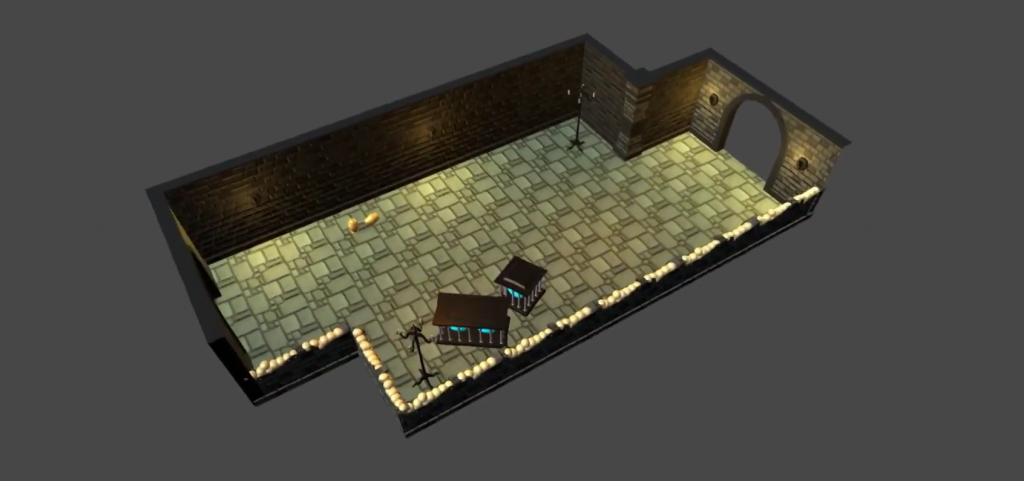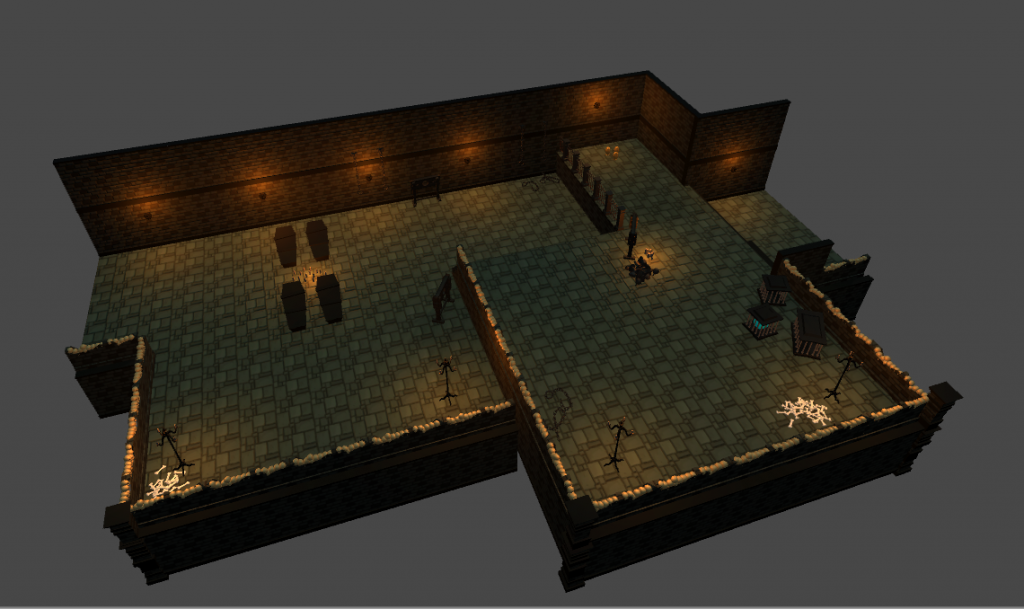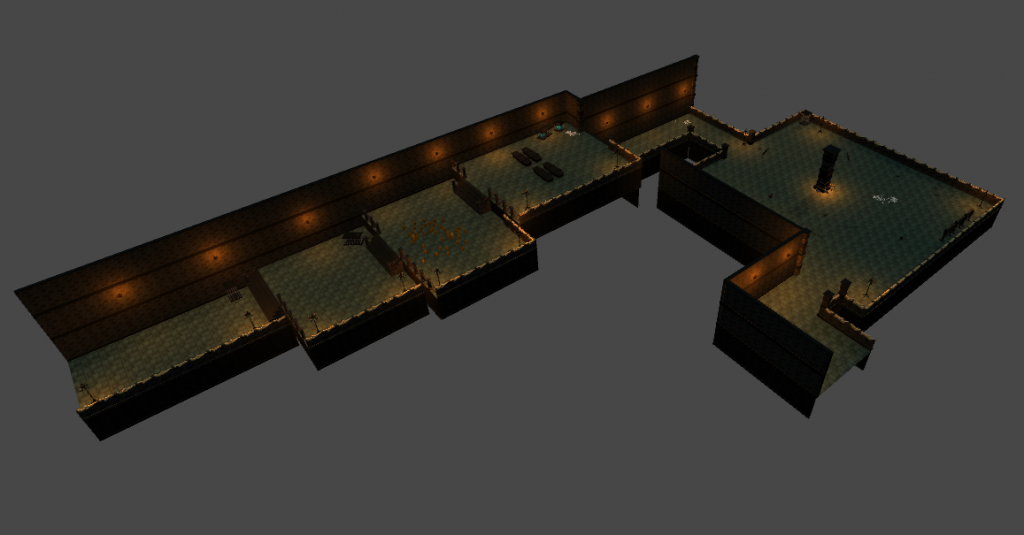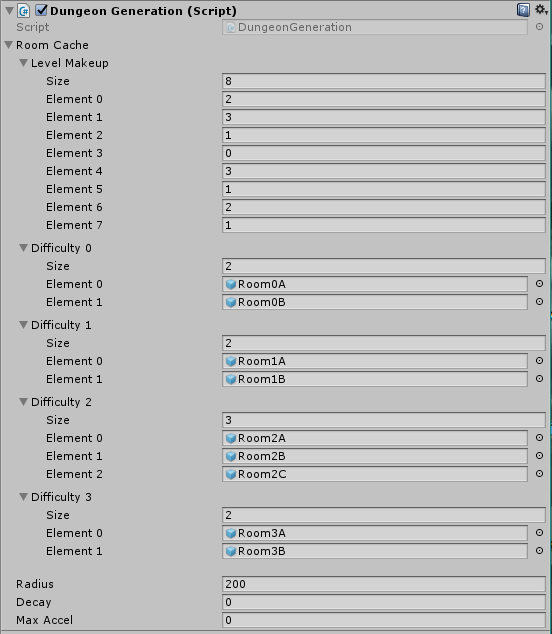Cryptomancy
Production Cycle
12 weeks
Team
Producer
Evan Sarmanian
Lead Artist
Ryan Kirtlink
Environment Artist
Joseph Gale
Lead Designer
Timothy White
Level Designer
Evangelia Fahantidou
Designer
Thomas Ghulam
Lead Programmer
Kyle Netherland
Programmer
Ethan Lamitie
I came into the project during the second cycle of production and was assigned the level designer position for the co-op procedurally generated dungeon crawler.
Initially, we had to decide on the main unity of difficulty of the game, and after much debate, we decided that the time dedicated in order to clear each room would be the best measure of their difficulty.
With that in mind, I created multiple rooms and tested them individually to find out how long each took to complete. Based on their average, I categorized them in one of 4 difficulty levels:
0) easy reward (mostly) rooms
1) some enemies, bigger space, over 2 minutes
2) many enemies, bigger space, over 4 minutes
3) many many enemies, huge spaces (arenas), over 6 minutes
Here’s a brief video of me explaining the process:

With rooms of 3 almost depleting the time left to complete the level, I had to reward the players with Time Drops in order to make sure they could carry through if they were skillful enough. Each room has breakable urns and cages containing as much time in seconds as the average time it took testers to clear it.
Reward Rooms (Difficulty 0)
 Reward rooms are the most rare to appear, since each room of the higher difficulty is balanced within itself. They are meant to give the players an extra edge and space to mess up.
Reward rooms are the most rare to appear, since each room of the higher difficulty is balanced within itself. They are meant to give the players an extra edge and space to mess up.
Easy Rooms (Difficulty 1)

These rooms are most commonly found in the early levels.
Medium Rooms (Difficulty 2)

Medium rooms, along with an increased number of enemies, have more physical barriers. This could mean that the players have to move around fences/obstacles in order to get to the end of the room or in order to access the Time Drops of that room and make up for their lost time. All that while being chased down by angry templars.
Difficult Rooms (Difficulty 3)

These rooms take up a lot of space and have areas of conflict and areas of reward. They contain bigger areas (within themselves) that serve as arenas, with a large number of templars coming at them at once.
Level Variables
Each level is created with a set of predetermined values.

- Number of rooms
- Increases by 1 every 2 levels
- Each room’s difficulty

- Pool of rooms to pick from for each difficulty
